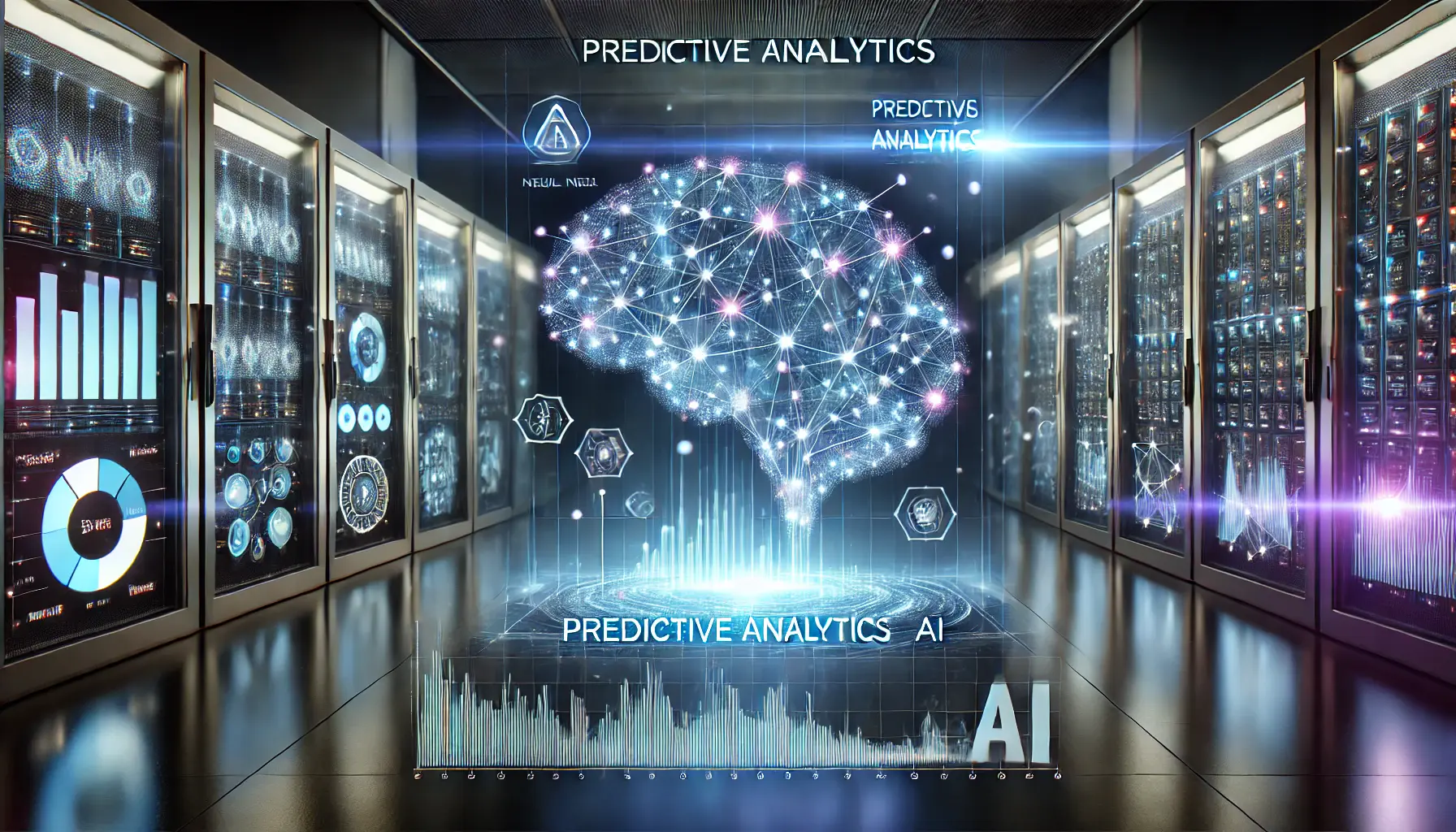The advent of artificial intelligence (AI) has ushered in a new era of technological innovation, transforming how we interact with digital platforms and automate processes across various sectors.
At the forefront of this revolution is Google’s Bard, an AI-powered chatbot designed to understand and generate human-like text based on the vast repository of information available on the web.
This groundbreaking tool has not only captivated the tech community but has also sparked interest across multiple industries, keen on leveraging its capabilities to enhance efficiency, creativity, and decision-making processes.
Google’s Bard, with its advanced language model and the ability to pull information directly from the internet, stands out as a versatile tool capable of driving significant changes in how businesses operate.
Its introduction marks a pivotal moment in the AI landscape, offering a glimpse into the future where AI-driven solutions become integral to solving complex problems, fostering innovation, and creating value in unprecedented ways.
The adaptation of Google’s Bard across various industries is a testament to the versatility and potential of AI to redefine the boundaries of what is possible.
- Revolutionizing Customer Service
- Optimizing Content Creation and Marketing
- Transforming Data Analysis and Decision Making
- Advancing Healthcare Innovations
- Empowering Educational Tools and Learning
- Enhancing Supply Chain Management
- Driving Innovation in Financial Services
- Conclusion: The Multifaceted Impact of Google’s Bard
- FAQs: Adaptation the World of Google’s Bard
Revolutionizing Customer Service
Enhancing Customer Interactions
The customer service industry has been one of the first to embrace the capabilities of Google’s Bard.
By integrating Bard into customer service platforms, businesses can offer more personalized and efficient support to their customers.
Bard’s ability to understand and process natural language queries allows it to provide accurate responses to customer inquiries, reducing wait times and improving overall customer satisfaction.
This AI-driven approach not only streamlines operations but also enables companies to scale their customer service efforts without compromising on quality.
Incorporating Bard into customer service tools has led to the development of more intuitive chatbots and virtual assistants, capable of handling a wide range of tasks from answering FAQs to troubleshooting common issues.
Case Studies of Success
Several companies have already reported success stories where Bard has significantly improved their customer service metrics.
For instance, a retail company integrated Bard into their online chat service, resulting in a 40% reduction in response time and a noticeable increase in customer satisfaction scores.
Similarly, a telecommunications firm used Bard to power their customer support, leading to a 30% decrease in call volumes as more customers opted for the efficient and immediate assistance provided by the AI-powered chatbot.
These real-life applications highlight Bard’s impact on the customer service industry, demonstrating its ability to enhance the quality of support provided to customers while also optimizing operational efficiency.
As more businesses recognize the benefits of AI-driven customer service, the adoption of tools like Google’s Bard is expected to rise, setting new standards for excellence in customer interactions.
Optimizing Content Creation and Marketing
The digital marketing and content creation landscapes are undergoing a significant transformation, thanks to the integration of AI technologies like Google’s Bard.
This powerful tool is reshaping how content is conceptualized, created, and distributed, offering new avenues for creativity and efficiency in marketing strategies.
By harnessing Bard’s capabilities, marketers and content creators can generate innovative ideas, produce high-quality content at scale, and tailor their messaging to meet the evolving preferences of their target audience.
One of the standout features of Bard is its ability to generate creative content, from blog posts and articles to social media updates and marketing copy.
This not only accelerates the content creation process but also ensures that the output is engaging, informative, and aligned with the brand’s voice.
Furthermore, Bard’s deep understanding of language nuances and user intent allows for the optimization of content for search engines, enhancing visibility and driving organic traffic.
Streamlining Content Strategy with AI
Leveraging Bard for SEO: By analyzing keywords and current trends, Bard assists in creating content that is not only relevant but also optimized for search engines, improving rankings and visibility.
- Personalization at Scale: Bard’s AI analyzes user data to tailor content, making it more relevant to individual preferences and behaviors, thus increasing engagement and conversion rates.
- Automating Routine Tasks: From drafting email campaigns to generating reports, Bard automates repetitive tasks, allowing marketing teams to focus on strategy and creative endeavors.
Enhancing Creativity and Engagement
- Content Diversification: Bard helps in exploring new content formats and ideas, encouraging brands to diversify their content strategy to engage different segments of their audience.
- Interactive Content Creation: With Bard, marketers can create interactive and dynamic content, such as quizzes and polls, which are more likely to capture the audience’s attention and foster engagement.
The adaptation of Google’s Bard in content creation and marketing signifies a shift towards more data-driven, personalized, and efficient practices.
As AI continues to evolve, its role in shaping marketing strategies and content will undoubtedly grow, offering endless possibilities for innovation and growth in the digital space.
Transforming Data Analysis and Decision Making
In the realm of data analysis and decision-making, Google’s Bard emerges as a pivotal tool, revolutionizing the way businesses harness data to inform strategic decisions.
The capacity of Bard to process and analyze vast datasets in real-time allows organizations to glean actionable insights more efficiently than ever before.
This AI-driven approach to data analysis not only accelerates the decision-making process but also enhances its accuracy, empowering businesses to respond swiftly to market changes and opportunities.
Bard’s integration into data analytics tools facilitates a deeper understanding of complex data patterns and trends.
By leveraging natural language processing, Bard simplifies the interpretation of data, making it accessible to decision-makers regardless of their technical expertise.
This democratization of data analysis fosters a culture of informed decision-making across all levels of an organization.
Key Benefits in Data-Driven Strategies
- Real-Time Insights: Bard’s ability to analyze data in real-time ensures that businesses have access to the most current information, enabling timely and relevant decisions.
- Predictive Analytics: By identifying patterns and trends in historical data, Bard aids in forecasting future market behaviors and trends, allowing companies to strategize proactively.
Enhanced Data Visualization: Bard can assist in creating comprehensive data visualizations, making complex data more understandable and actionable for strategic planning.
Case Studies of Impact
- A financial services firm utilized Bard to analyze customer data, resulting in a 20% increase in customer retention through personalized service offerings.
- An e-commerce platform leveraged Bard for predictive analytics, optimizing their inventory management and reducing stockouts by 30%.
The transformative potential of Google’s Bard in data analysis and decision-making is undeniable.
As businesses continue to navigate an increasingly data-driven world, the adoption of AI tools like Bard will become critical in maintaining competitive advantage and driving sustainable growth.
The future of strategic decision-making lies in the ability to seamlessly integrate AI-driven insights into business processes, a vision that Bard is turning into reality.
Advancing Healthcare Innovations
The healthcare industry stands on the brink of a significant transformation, driven by the integration of AI technologies like Google’s Bard.
This powerful tool is being leveraged to enhance diagnostic accuracy, personalize patient care, and streamline administrative processes, marking a new era in healthcare where technology and medicine converge to improve patient outcomes.
Bard’s sophisticated language processing and information retrieval capabilities make it an invaluable asset in handling the vast amounts of data characteristic of the healthcare sector.
From analyzing patient records and medical literature to assisting in clinical decision-making, Bard’s application in healthcare is multifaceted.
Its ability to quickly process and synthesize medical information can support healthcare professionals in diagnosing conditions more accurately and developing tailored treatment plans.
Moreover, Bard’s conversational AI features enable the development of virtual health assistants, providing patients with reliable medical information and support outside the clinical setting.
Revolutionizing Patient Care and Research
- Diagnostic Support: Bard can analyze symptoms and medical histories to suggest possible diagnoses, helping doctors to identify conditions more rapidly and accurately.
- Personalized Treatment Plans: By considering a patient’s unique medical history and current condition, Bard assists healthcare providers in crafting personalized care strategies.
- Medical Research: Bard accelerates medical research by quickly sifting through vast databases of scientific literature to find relevant studies and data, facilitating advancements in medical knowledge and treatment methods.
Improving Healthcare Accessibility
- Virtual Health Assistants: Bard-powered chatbots can provide 24/7 health advice and support, making healthcare information more accessible to the wider public.
Streamlining Administrative Tasks: Bard can automate routine administrative tasks such as appointment scheduling and patient data management, allowing healthcare staff to focus more on patient care.
The adaptation of Google’s Bard in the healthcare industry not only promises to enhance the efficiency and effectiveness of medical care but also to make healthcare more accessible and personalized.
As AI continues to evolve, its potential to support healthcare professionals and patients alike will undoubtedly expand, paving the way for innovations that could redefine health and wellness for future generations.
Empowering Educational Tools and Learning
The education sector is experiencing a paradigm shift with the integration of AI technologies like Google’s Bard, which is redefining the landscape of learning and teaching.
Bard’s advanced capabilities are being harnessed to create personalized learning experiences, automate administrative tasks, and provide educators with innovative teaching tools.
This AI-driven approach to education not only enhances the learning process but also makes education more accessible and engaging for students of all ages.
Google’s Bard, with its ability to understand and generate human-like text, is particularly well-suited for developing educational content, interactive learning modules, and providing instant feedback to students.
Its application in education extends beyond content creation, offering potential in areas such as language learning, where it can simulate conversation and practice, and in research, where it can help students navigate vast amounts of information efficiently.
Transforming the Classroom Experience
- Customized Learning Paths: Bard can analyze a student’s learning style, strengths, and weaknesses to recommend personalized learning materials and activities, enhancing the effectiveness of education.
- Interactive Learning: Through the creation of dynamic and interactive content, Bard engages students in the learning process, making education more captivating and effective.
Supporting Educators and Administrators
- Automating Grading and Feedback: Bard can assist educators by automating the grading of assignments and providing constructive feedback, saving time and allowing for more focused teaching.
Resource Generation: Educators can leverage Bard to generate teaching materials, lesson plans, and quizzes, tailored to their curriculum needs and student learning objectives.
- Administrative Efficiency: Bard’s ability to automate administrative tasks such as scheduling and student inquiries reduces the workload on educational staff, enabling them to dedicate more time to teaching and student engagement.
The integration of Google’s Bard into the educational sector signifies a move towards a more personalized, efficient, and interactive learning environment.
As AI technologies continue to evolve, their role in education is set to grow, offering promising opportunities to overcome traditional challenges in teaching and learning, and opening up new horizons for educational innovation.
Enhancing Supply Chain Management
The integration of AI technologies like Google’s Bard into supply chain management represents a significant leap forward in optimizing logistics, forecasting, and operational efficiency.
Bard’s advanced data processing and predictive analytics capabilities enable businesses to anticipate supply chain disruptions, streamline inventory management, and enhance supplier relationships.
This AI-driven approach not only improves the resilience and agility of supply chains but also contributes to cost reduction and better customer satisfaction.
By leveraging Bard’s ability to analyze vast datasets and generate insightful predictions, companies can make informed decisions that align with their strategic goals.
Bard’s role in supply chain management extends to automating routine tasks, such as order processing and tracking, further increasing operational efficiency and allowing businesses to focus on strategic growth initiatives.
Optimizing Inventory and Logistics
- Predictive Inventory Management: Bard helps businesses predict inventory needs accurately, reducing overstock and understock situations, and ensuring optimal inventory levels are maintained.
- Logistics Optimization: Through route optimization and delivery scheduling, Bard minimizes delays and reduces transportation costs, enhancing the overall efficiency of the supply chain.
Improving Supplier and Customer Relations
- Supplier Performance Analysis: Bard can analyze supplier data to assess performance, helping businesses identify reliable partners and mitigate risks associated with supplier failures.
Customer Demand Forecasting: By analyzing market trends and consumer behavior, Bard enables businesses to anticipate customer demand, leading to improved product availability and customer satisfaction.
The adaptation of Google’s Bard in supply chain management showcases the potential of AI to transform traditional operations into more intelligent, responsive, and efficient systems.
As companies continue to navigate the complexities of global supply chains, the role of AI tools like Bard will become increasingly vital in ensuring competitiveness and sustainability in the ever-evolving market landscape.
Driving Innovation in Financial Services
The financial services industry is undergoing a digital transformation, with AI technologies like Google’s Bard playing a crucial role in reshaping banking, investment, and insurance services.
Bard’s sophisticated analytical capabilities enable financial institutions to enhance risk assessment, personalize customer services, and streamline operations.
This AI-driven innovation not only leads to improved efficiency and compliance but also opens up new avenues for customer engagement and product development.
By harnessing Bard’s ability to process and analyze large volumes of financial data, institutions can gain deeper insights into market trends, customer behavior, and risk factors.
This level of analysis supports more informed decision-making, from credit risk assessment to investment strategy formulation.
Additionally, Bard’s conversational AI features can be leveraged to provide customers with personalized financial advice, enhancing the customer experience and fostering loyalty.
Revolutionizing Risk Management and Compliance
- Enhanced Fraud Detection: Bard’s data analysis capabilities enable the identification of unusual patterns and potential fraud, significantly reducing financial losses and increasing trust among customers.
- Compliance Monitoring: Bard can automate the monitoring of transactions and communications for compliance with regulations, ensuring financial institutions adhere to legal standards and avoid penalties.
Personalizing Financial Services
- Customized Financial Advice: Bard can analyze individual financial situations to offer tailored advice on savings, investments, and budgeting, improving financial outcomes for customers.
Automated Customer Support: By integrating Bard into customer service platforms, financial institutions can provide instant, accurate responses to customer inquiries, improving service efficiency and customer satisfaction.
The integration of Google’s Bard into the financial services sector signifies a shift towards more agile, customer-centric, and intelligent financial solutions.
As AI continues to advance, its impact on the financial industry is expected to deepen, driving innovation, enhancing security, and delivering personalized financial experiences.
The future of financial services lies in leveraging AI technologies like Bard to meet the evolving needs of customers and navigate the complexities of the global financial landscape.
Conclusion: The Multifaceted Impact of Google’s Bard
The exploration of Google’s Bard across various industries reveals a common theme: the transformative potential of AI to revolutionize traditional processes, enhance efficiency, and foster innovation.
From customer service to healthcare, education, supply chain management, and financial services, Bard’s integration signifies a leap towards a more intelligent, responsive, and personalized approach to solving complex challenges and meeting consumer demands.
Key Takeaways
- Revolutionizing Customer Service: Bard has redefined customer interactions, making them more efficient and personalized.
- Optimizing Content Creation: In marketing, Bard’s ability to generate and optimize content has opened new avenues for engagement.
- Transforming Data Analysis: Bard’s predictive analytics enhance decision-making across sectors.
- Advancing Healthcare: Bard supports diagnostics and patient care, promising a future of more accessible healthcare solutions.
- Empowering Education: Bard personalizes learning, making education more engaging and accessible.
- Enhancing Supply Chain Management: Bard optimizes logistics and inventory, ensuring more resilient supply chains.
- Driving Financial Innovation: In financial services, Bard enhances risk management and personalizes customer services.
The adaptation of Google’s Bard in various industries is not just about the automation of tasks or the processing of information; it’s about leveraging AI to create value, drive growth, and enhance human capabilities.
As we stand on the brink of a new era of AI-driven innovation, the potential of tools like Bard to reshape industries and improve lives is both immense and inspiring.
The journey of Bard’s integration across sectors is a testament to the power of AI to transform the world as we know it, promising a future where technology and human ingenuity converge to solve some of the most pressing challenges of our time.
In conclusion, the impact of Google’s Bard across industries underscores the critical role of AI in driving the next wave of digital transformation.
As businesses and institutions continue to harness Bard’s capabilities, the boundaries of what’s possible will expand, paving the way for a future where AI not only supports but enhances every aspect of our professional and personal lives.
The adaptation of Google’s Bard is just the beginning, and its continued evolution will undoubtedly bring forth new opportunities for innovation, efficiency, and growth.
FAQs: Adaptation the World of Google’s Bard
Explore commonly asked questions about Google’s Bard and its capabilities in transforming industries with AI.
Google’s Bard is an AI chatbot designed to generate text, answer questions, and provide insights by accessing a vast array of web information.
Bard uses advanced AI to understand and respond to queries with information pulled directly from the web, offering detailed and relevant answers.
Yes, Bard can generate a wide range of content, from articles to social media posts, by leveraging its AI to produce creative and engaging text.
Initially launched in the U.S. and U.K., Bard’s availability is expanding, aiming to reach a broader global audience with its AI services.
Bard can automate responses and provide personalized support, improving efficiency and customer satisfaction in service industries.
Bard serves as a dynamic educational tool, offering personalized learning experiences and supporting educators with resource generation.
Yes, by analyzing data and predicting trends, Bard helps businesses optimize inventory, manage logistics, and forecast customer demand accurately.
Bard enhances financial services by providing risk assessment, fraud detection, and personalized customer advice through AI-driven analysis.












